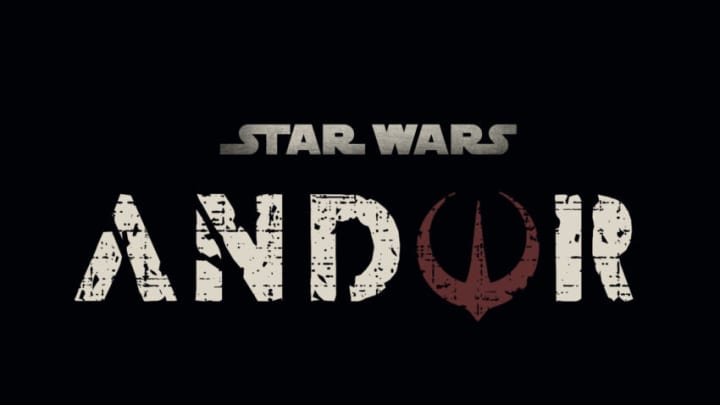Andor will show audiences a new perspective to the Rebel Alliance when it debuts in late August, exploring how the movement came to be. It will focus on Cassian and Mon Mothma. Cassian’s story will take place closer to the ground however, focusing on the early activities of an infant Rebellion, made up of a small number of people. Covert action will be favoured over open strategies. In this way, the Rebellion will be presented as an insurgency. This a concept that the show should refer to throughout, and there is a lot the show can learn from the concept.
Firstly, the concept of insurgency should be explained. The US Department of Defence defines an insurgency as:
‘an organized resistance movement that uses subversion, sabotage, and armed conflict to achieve its aims. Insurgencies normally seek to overthrow the existing social order and reallocate power within the country. They may also seek to (1) Overthrow an established government without a follow-on social revolution. (2) Establish an autonomous national territory within the borders of a state. (3) Cause the withdrawal of an occupying power. (4) Extract political concessions that are unattainable through less violent means.’
This organized resistance is usually very small, and it’s because of this size the group sticks to covert, hit and run attacks on key objectives to force a change in government. These are better known as guerrilla tactics. A key feature of insurgencies is having a structure made of cells, decentralising command, which has the advantage of masking the true size of an insurgency, and if one cell is captured or destroyed the insurgency as a whole doesn’t collapse.
Insurgencies are often likened to terrorists, especially by the governments they are fighting. While there are a myriad of differences between insurgents and terrorists, the main one is who is targeted. Insurgents prefer to keep their attention focused on political opponents and institutions. Terrorists by contrast target indiscriminately, often purposely attacking civilians. However, this doesn’t mean insurgencies are clean. Insurgencies don’t follow the rules of war, they don’t wear uniforms for example. Many see violence for political purpose as terrorists, and it is easy for insurgencies to slip into being terrorists.
So what can Andor learn from this? Well, firstly it looks like the Rebellion will be presented very differently from what audiences are used to. In the original trilogy, the Rebel Alliance comes across very much like a standing army. It has a centralised command structure, fleets structured around large capital ships, and soldiers in uniform. Star Wars: Rebels showed a similar look on the Rebellion. While they began with a cell structure, they quickly merged into one Rebellion, and conducted overt offensive action (such as the attempted attack on the TIE Defender Factory), and operated capital ships. The moment Mon Mothma declared a formation of a formal Rebellion, any remaining insurgent aspects fell away.
Andor will take a different approach to the Rebellion. The trailer shows Cassian sneaking through an occupied town, and those that live there hiding weapons when the Empire approach. This type of covert action is likely to continue throughout the show, as at this time the Rebels don’t have the manpower or the equipment to sustain overt action. Hit and run raids against the Empire are likely to be a huge part of any covert action. Andor has been described as a spy-thriller, a perfect genre to explore insurgent action. It means that the show won’t rely on traditional action set pieces, and instead focus on the tension that can be gained from spying and espionage.
Another way Andor can use the concept of insurgency in its storytelling is to explore what level of violence is acceptable to fight a brutally oppressive regime. As previously mentioned, the line between insurgencies and terrorists is often blurred, with both using highly violent methods to enact political change. Andor will explore the terrible acts Cassian has done in the name of the Rebellion, hinting at a darker take on a traditionally moral organisation. A theme of the show is likely going to be how far is too far when using violence against a government, and how a person can lose themselves if they aren’t careful.
This is where Saw Gerrera and the Partisans come in. They are explicitly a terrorist group, using extreme methods to try and bring down the Empire. Violence has consumed Saw, who can’t see a less extreme way to resolve the conflict. This results in him breaking with the formal Rebel Alliance in Rebels, and fighting on his own terms. Saw Gerrera represents what Andor and the early Rebellion could become if they aren’t careful.
The Empire is also likely to engage with these concepts. As they are the government, they will likely designate Andor and the group of insurgents as terrorists in propaganda. As the word terrorist has negative connotations associated to it, they will seek to push the narrative that Cassian is dangerous. Audiences are likely to see this narrative play out in the Senate, and the Empire could use it as a way to justify further militarisation in the name of security. This is representative of not only how malleable these concepts are, but also show real life. Governments are quick to label any insurgent group terrorists, to delegitimise the threat that they pose and take freedoms from its people.
Andor could therefore engage with the politics of insurgency in several ways, from showing the darker aspects that they can bring, showing how easy it is for insurgents to slide into terrorism, and showing how governments seek to combat the threat they pose to its rule. Through exploring this, Andor will incorporate political theming into its story, appropriate for any Star Wars property.
